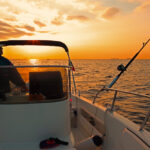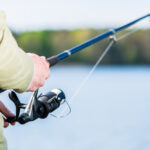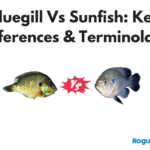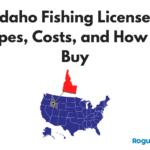Purchasing new equipment for any hobby can be a lot of fun, but it can also sometimes be a stressful experience. It’s great to see what’s available and which gadgets could make your fishing experience better, but it can also be hard to choose the right option for your needs.
This is especially true for fishing reels due to the sheer number of factors that you need to consider in the decision. As well as picking out the perfect model and the appropriate accessories, you must choose the correct size spinning reel.
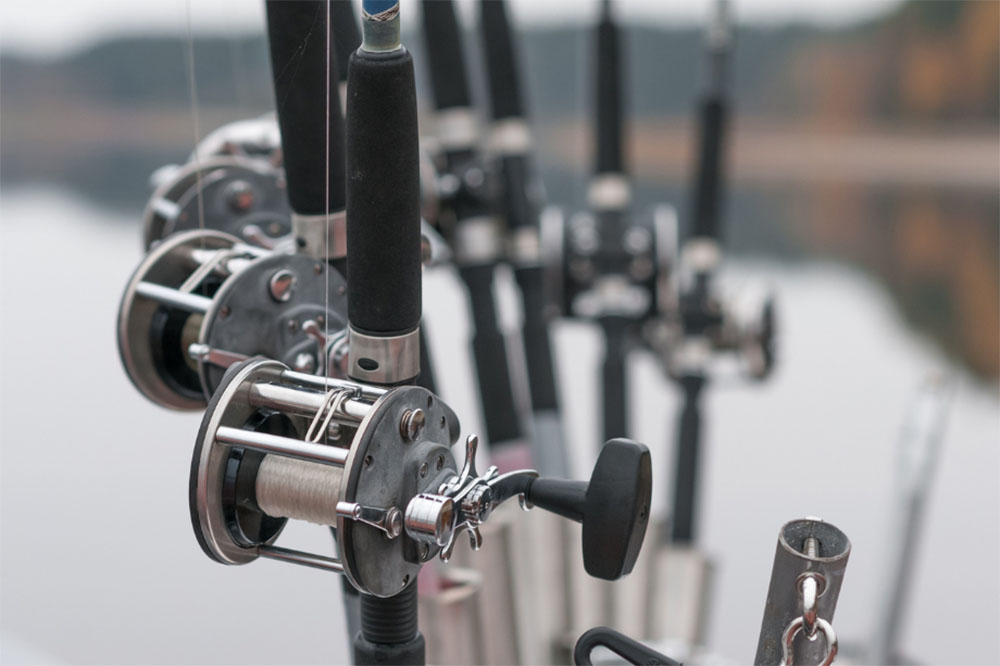
Don’t worry if you’re not a hundred percent sure what you should be looking for in terms of size, as this article will walk you through all the different sizes of spinning reels, and we’ve put together a helpful size chart for you to quickly find out what size will be best suited to you.
What Size Spinning Reel Do I Need?
The answer to this will come down to the kind of fishing you’re likely to be doing, as the external factors will influence the size of the spinning reel that’s appropriate. These three things are what we consider to be some of the most important factors to think about in this decision:
- Are you going to be fishing in fresh or saltwater?
- Are you hoping to catch larger fish, or will you start small?
- Do you have a specific line strength in mind?
Spinning reels designed for use in saltwater tend to be bigger than reels for freshwater fishing, as they’re usually set to deal with stronger and larger fish. A longer line is another essential due to most saltwater species’ strength and their ability to make a swim for it after being hooked, potentially tugging at the line until there is none on the reel.
It shouldn’t take a genius to work out that the larger the fish you’re hoping to catch, the larger your spinning reel should be. Fish like bluegill or salmon won’t need much bigger than a 1,000 spinning reel, but you’ll be better off with a size closer to 10,000 for fish like tuna.
It’s important not to overestimate the size you’ll need as larger spinning reels are also heavier to use and travel with, and they’re pretty bulky, which makes them trickier to store. Sounds impossible to make the right choice? It isn’t! Just check out our size guide (learn about the parts of a spinning reel here) below for all the information you need to know about spinning reel sizes.
Size Guide – Explained
We thought we’d clear a few things up before we got started, which is to say that there are two different ways of classifying sizes when it comes to spinning reels which can cause things to become a little complicated.
For example, certain manufacturers will categorize their sizing groups in different ways. Some use a 10, 20, 30, etc., size metric, and others are sized in the 1,000s, 2,000s, 3,000s. Once you’ve figured it out, though, it’s not too difficult to understand.
A size ten reel from one manufacturer will be the same as a size 1,000, and 20 would correspond to a size 2,000, which is the same for all the sizes! You can ignore the zeros after the first two digits, and this way, you’ll have a universal size guide to follow.
Spinning Reel Size Chart
Small size spinning reels: 1,000 – 3,500
Small-sized spinning reels are perfect for the thinner, lightweight rods often used to catch small-fry or any type of fish that weighs less than around 15 pounds.
These rods are typically between 6 and 7 feet long, and they are most effective when used with a 2-10 lbs monofilament or a 4-14 lbs braid.
You’ll often see rods that fit this description being cast around freshwater but provided it’s a protected area, and they can also be used when fishing in saltwater locations.
| Reel Size | Recommended Mono Line Strength | Recommended Braid Line Strength | Recommended Applications | Recommended Species (North America) |
| 10 / 1,000 | 2-4 lbs (1-2 kg) | 4-8 lbs | Extra light fishing in areas with freshwater, inc. estuaries, bays, and harbors. | Bluegill Trout, Crappie, Yellow Perch. |
| 20 / 2,000 | 4-6 lbs (2-3 kg) | 4-8 lbs | Extra light fishing in areas with freshwater, inc. estuaries, bays, and harbors. | Bass, Crappie, Bluegill, Trout, Yellow Perch. |
| 25 / 2,500 | 5-8 lbs (2.5-4 kg) | 5-12 lbs | Light fishing in areas with freshwater, inc. estuaries, bays, and harbors. | Base, Walleye, Northern Pike |
| 30 / 3,000 | 6-10 lbs (3-5 kg) | 6-14 lbs | Light fishing in areas with freshwater, inc. estuaries, bays, and harbors. | As above, with the addition of catfish |
| 35 / 3,500 | 6-10 lbs (3-5 kg) | 6-14 lbs | Light fishing in areas with freshwater, inc. estuaries, bays, and harbors. | The same as the previously recommended species |
Medium Size Spinning Reels: 4,000 – 5,500
Medium-sized spinning reels are perfect for the medium yet still lightweight rods often used to catch small-medium-sized fish weighing up to around 30 pounds.
These rods are typically between 7 and 8 feet long, and they are most effective when used with an 8-14 lbs monofilament or a 10-25 lbs braid.
You’ll often see rods that fit this description being cast around freshwater for more heavy-duty workloads and inshore fishing in saltwater locations.
| Reel Size | Recommended Mono Line Strength | Recommended Braid Line Strength | Recommended Applications | Recommended Species (North America) |
| 40 / 4,000 | 8-12 lbs (4-6 kg) | 8-20 lbs | Medium fishing applications in freshwater areas and inshore saltwater | Catfish, Muskie, Snapper, Snook, Redfish |
| 45 / 4,500 | 8-12 lbs (4-6 kg) | 8-20 lbs | Medium fishing applications in freshwater areas and inshore saltwater | Catfish, Muskie, Snapper, Snook, Redfish |
| 50 / 5,000 | 10-14 lbs (5-7 kg) | 10-25 lbs | Medium fishing applications in freshwater areas and inshore saltwater | Catfish, Muskie, Snapper, Snook, Redfish |
| 55 / 5,500 | 10-14 lbs (5-7 kg) | 10-25 lbs | Medium fishing applications in freshwater areas and inshore saltwater | Catfish, Muskie, Snapper, Snook, Redfish |
Large Size Spinning Reels: 6,00 – 30,000
Large-sized spinning reels are perfect for the medium yet heavier rods often used for offshore fishing and catching fish weighing around 150+ pounds.
These rods are most effective when used with a 12-60 lbs monofilament or a 24-100 lbs braid.
You won’t often see rods that fit this description being cast around in many freshwater locations, but they’re ideal for more heavy-duty workloads and can be used to catch large species such as sailfish.
| Reel Size | Recommended Mono Line Strength | Recommended Braid Line Strength | Recommended Applications | Recommended Species (North America) |
| 60 / 6,000 | 12-16 lbs (6-8 kg) | 12-30 lbs | Medium fishing applications in inshore and offshore saltwater areas | Striped Bass, Salmon, Snook, Redfish (Red Drum) |
| 65 / 6,500 | 12-16 lbs (6-8 kg) | 12-30 lbs | Medium fishing applications in inshore and offshore saltwater areas | Striped Bass, Salmon, Snook, Redfish (Red Drum) |
| 70 / 7,000 | 14-18 lbs (7-9 kg) | 15-40 lbs | Medium fishing applications in inshore and offshore saltwater areas | Striped Bass, Salmon, Snook, Redfish (Red Drum) |
| 75 / 7,500 | 16-20 lbs (8-10 kg) | 20-50 lbs | Medium fishing applications in inshore and offshore saltwater areas | Striped Bass, Salmon, Snook, Redfish (Red Drum) |
| 80 / 8,000 | 16-20 lbs (8-10 kg) | 20-50 lbs | Medium fishing applications in inshore and offshore saltwater areas | Wahoo, Roosterfish, Amberjack, Barracuda, Dorado |
| 85 / 8,500 | 18-22 lbs (9-11 kg) | 30-50 lbs | Medium fishing applications in inshore and offshore saltwater areas | Wahoo, Roosterfish, Amberjack, Barracuda, Dorado |
| 90 / 9,000 | 18-22 lbs (9-11 kg) | 30-50 lbs | Medium fishing applications in inshore and offshore saltwater areas | Wahoo, Roosterfish, Amberjack, Barracuda, Dorado |
| 95 / 9,500 | 20-25 lbs (10-12.5 kg) | 30-50 lbs | Medium fishing applications in inshore and offshore saltwater areas | Wahoo, Roosterfish, Amberjack, Barracuda, Dorado |
| 100 / 10,000 | 20-25 lbs (10-12.5 kg) | 30-60 lbs | Medium/heavy fishing applications in inshore and offshore saltwater areas | Wahoo, Tuna, Dorado, Shark |
| 105 / 10,500 | 22-27 lbs (10-13.5 kg) | 30-60 lbs | Medium/heavy fishing applications in inshore and offshore saltwater areas | Wahoo, Tuna, Dorado, Shark |
| 120 / 12,000 | 28 lbs+ (14 kg+) | 30-60 lbs | Medium/heavy fishing applications in offshore saltwater areas | Wahoo, Tuna, Dorado, Shark |
| 140 / 14,000 | 28 lbs+ (14 kg+) | 30-60 lbs | Medium/heavy fishing applications in offshore saltwater areas | Wahoo, Tuna, Dorado, Shark |
| 160 / 16,000 | 32 lbs+ (16 kg+) | 40-70 lbs | Medium/heavy fishing applications in offshore saltwater areas | Wahoo, Tuna, Dorado, Shark |
| 165 / 16,500 | 36 lbs+ (18 kg+) | 40-70 lbs | Medium/heavy fishing applications in offshore saltwater areas | Wahoo, Tuna, Dorado, Shark |
| 180 / 18,000 | 36 lbs+ (18 kg) | 40-70 lbs | Medium/heavy fishing applications in offshore saltwater areas | Wahoo, Tuna, Dorado, Shark |
| 200 / 20,000 | 40 lbs+ (20 kg+) | 50-80 lbs | Heavy fishing applications in offshore saltwater areas | Large Tuna, Sailfish, Tarpon, Giant Trevally |
| 250 / 25,000 | 50 lbs+ (25 kg+) | 50-80 lbs | Heavy fishing applications in offshore saltwater areas | Large Tuna, Sailfish, Tarpon, Giant Trevally |
| 300 / 30,000 | 60 lbs+ (30 kg+) | 80-100 lbs | Heavy fishing applications in offshore saltwater areas | Large Tuna, Sailfish, Tarpon, Giant Trevally |
How Do You Choose The Right Spinning Reel For Your Rod?
Matching up your equipment can be tricky, especially if you’ve only just taken up fishing or are still new to the hobby, as the different components can be confusing.
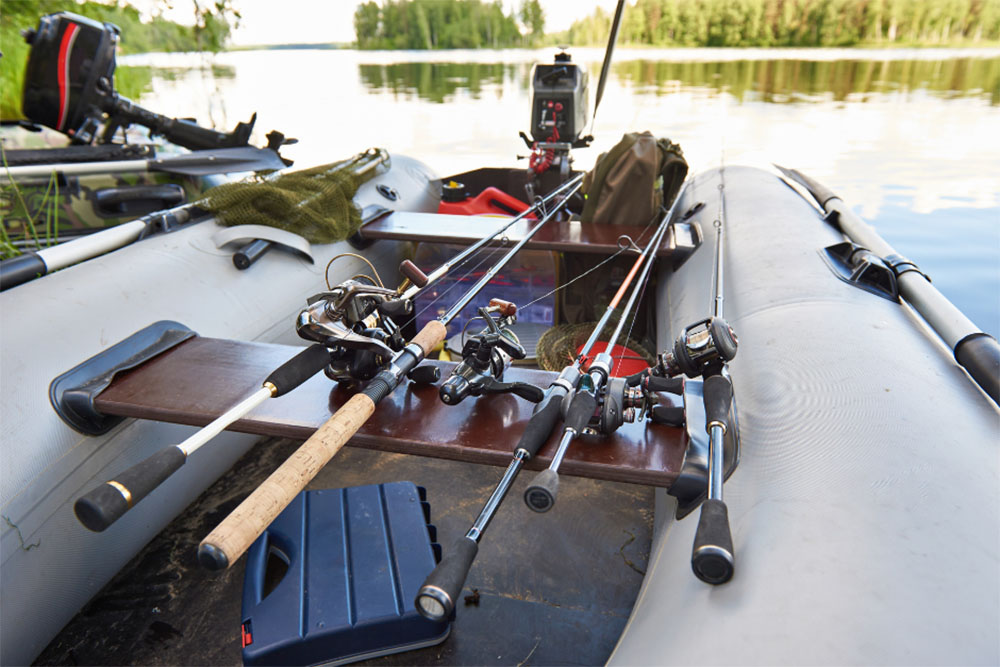
It might sound obvious, but the first thing to do is check that your rod is a spinning rod, as these are designed for use with a spinning reel, but a baitcasting reel is incompatible.
Most fishing rods (learn about the best swimbait rods here) will have a few numbers printed on them, and these can usually be found where the grip runs out. The numbers will tell you how long the rod is and how durable the manufacturer recommends the line.
For example, if your rod has an 8-20 lbs monofilament line strength recommendation, you should try to find an 8-20 lbs line to use with it. When you know what strength you need, you can refer to our spinning reel size chart to see different options for different strengths.
If we continue with the 8-20 lbs strength recommendation example, you should be aiming to pair a line of this strength with a 4,000 or 4,500 spinning reel.
After making sure this matches up, you’re ready to spool your line onto your reel – just remember that the method is different from how you would spool a bait caster rod. For more detailed instructions on spooling your line onto a spinning reel, check out our article.
What Is The Best Size Spinning Reel for Bass Fishing?
Whether you’re hot on the tail of a smallmouth or largemouth variety, the bass is one of the most popular fishes to set out to catch when you’re armed with a spinning reel.
However, there’s no one exact size that we can recommend for bass fishing, but rather a range of sizes for you to choose from depending on your specific needs.
| Reel Size | Recommended Mono Line Strength | Recommended Braid Line Strength |
| 2,000 | 4-6 lbs (2-3 kg) | 5-10 lbs |
| 2,500 | 5-8 lbs (2.5-4 kg) | 5-12 lbs |
| 3,000 | 6-10 lbs (3-5 kg) | 6-14 lbs |
| 3,500 | 6-10 lbs (3-5 kg) | 6-14 lbs |
The size that’s right for you will depend on your preferred fishing technique. Finesse fishing, for instance, would be easier with a 2,000 size spinning reel, as it’s ideal for use with ultralight lures. Larger lures, however, require a more enormous 3,000 or 3,5000 size spinning reel.
It’s widely believed that the larger the fishing reel size, the larger the bass you’ll be able to catch, but there’s not much truth to this. Unlike certain saltwater fish, the bass has shorter ‘runs,’ so they would struggle to out-swim your 2,000 spinning reel for bass before tiring.
When in doubt, a 2,500 or 3,000 is a standard, safe choice.
What Size Reel is Best for Surf Fishing?
First, what is surf fishing? This can refer to several things you could be hoping to catch, including strong fish, such as striped bass, which will put up more of a fight, smaller snappers, or even certain species of sharks if they’re swimming close to the shore.
Again, this means it’s hard to give an exact size recommendation. Usually, however, you can aim for something around the 5,000 to 8,000 size spinning reel.
This is larger than the spinning reel size we’d recommend for bass as it provides a further distance for the hooked fish to swim before they’d come close to pulling the line off the reel.
Final Thoughts
After reading this article, we hope that you’re feeling more confident in your ability to choose the right size spinning reel for your rod and your intended purpose.
They say a great athlete should never blame their tools, but having the right equipment can make a world of difference, so by using the perfect spinning reel, you’ll have a better chance at catching something for tonight’s dinner.
We’ve included some of our favorite recommendations to give you an idea of what to look out for and provide you with an easy reference for different types of needs.
Just because you now know a lot more about spinning reel sizes doesn’t mean that you should rush into buying a spinning reel without doing your due diligence first in terms of research.
There’s much to be said for bait caster reels, which wouldn’t work with a spinning reel, so it’s essential to consider all your options before making a decision.

